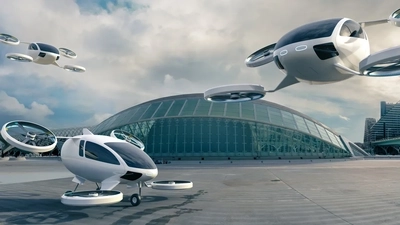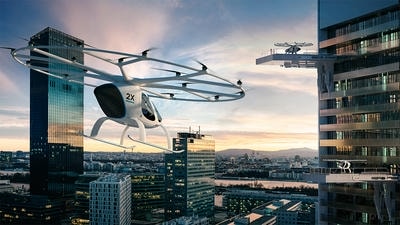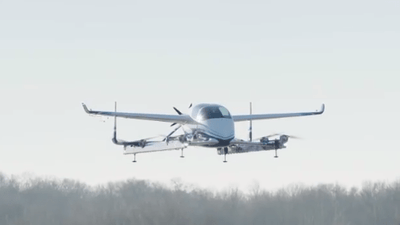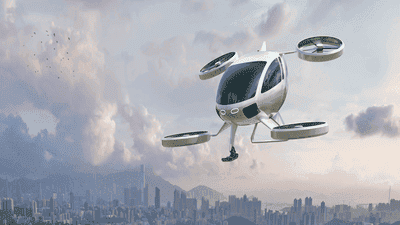
The concept of flying taxis has long captivated the imagination, featuring prominently in science fiction and futuristic depictions of urban life. With the advent of electric vertical takeoff and landing (eVTOL) technologies, what once seemed like an improbable fantasy is now edging closer to reality. As urban populations swell and transportation infrastructures become increasingly strained, flying taxis present an innovative solution to ease congestion and improve mobility. However, the question that looms large is whether these aerial vehicles can genuinely be eco-friendly or remain mere urban fantasies.
Flying taxis are air vehicles designed for urban air mobility, offering on-demand transportation services in metropolitan areas. They typically utilize eVTOL technology, which allows for takeoff and landing vertically—similar to helicopters—while powered by electric engines. The design of flying taxis aims to reduce travel times and alleviate ground congestion by moving passengers above city traffic.
Electric Propulsion: Most flying taxis are powered by electric motors or hybrid systems that combine conventional fuel engines with electric ones to minimize emissions.
Vertical Takeoff and Landing: The capability for vertical takeoff and landing enables flying taxis to operate in limited spaces, making it easier to integrate them into urban environments.
Autonomous Capability: While many prototypes are piloted by human operators, the future of flying taxis includes the potential for autonomous operation, reducing the need for skilled pilots.
Modular Design: Some flying taxis feature modular designs that allow for customization based on passenger needs, whether for individual rides or group transport.
Connected Infrastructure: Flying taxis are expected to be integrated with smart urban infrastructures, including air traffic management systems and mobility apps that facilitate ride-hailing services.

Several companies and organizations have emerged as frontrunners in the development of flying taxi technologies. Notable players include:
Uber Elevate: While Uber announced its plans to eventually sell its vertical flight initiative in 2020, the concept of integrating air taxis into its ride-hailing platform remains influential in guiding industry discussions.
Volocopter: This German company is developing electric air taxis designed for urban mobility, focusing on safety, efficiency, and ease of integration into existing transport networks.
Joby Aviation: Based in California, Joby Aviation is working on a fully electric eVTOL aircraft that promises to operate silently and sustainably while focusing on reducing travel time.
Airbus Vahana: Airbus has also entered the flying taxi market, exploring technological innovations like autonomous flight and air traffic management to enable the efficient operation of eVTOLs in urban settings.
Lilium: This German startup is developing its own electric jet and has made substantial progress in simulating long-distance flights with the potential for intercity transportation.
Despite significant technological advancements, various engineering challenges must be addressed before flying taxis become commonplace:
Battery Technology: Efficient energy storage is crucial for flying taxis. Current battery technologies need improvement to increase range, reduce weight, and extend flight times.
Noise Reduction: Electric engines are quieter than traditional combustion engines, but the noise generated during takeoff and landing could still pose challenges for urban settings. Innovations in design—including rotor shapes and configurations—are needed to minimize disruption.
Safety and Reliability: Ensuring the safety and reliability of flying taxis is paramount. Rigorous testing will be required to meet safety standards and build public confidence in the technology.
Infrastructure Development: To accommodate flying taxis, urban environments will need to develop vertiports—dedicated takeoff and landing sites—and supporting infrastructure that integrates these vehicles into the existing transportation ecosystem.
The promise of flying taxis includes the potential for reduced emissions and a smaller environmental footprint compared to traditional ground transport. Key factors that influence the eco-friendliness of flying taxis include:
Reduction of Ground Traffic: By taking to the skies, flying taxis can potentially decrease the number of vehicles on the road, leading to lower overall emissions from ground transportation.
Electric Propulsion: With many companies focusing on electric propulsion, flying taxis may significantly reduce greenhouse gas emissions compared to conventional taxis and ride-sharing vehicles powered by fossil fuels.
Energy Efficiency: If the electricity used to power flying taxis is sourced from renewable energy, their overall emissions could be minimal or even net-zero. This transition would significantly enhance their sustainability profile.
Potential for Multi-Modal Transport: The integration of flying taxis with existing public transit systems may promote fewer individual trips and enhance the potential for eco-friendly transportation options.
While the prospects of flying taxis seem promising, some environmental drawbacks must also be considered:
Carbon Footprint of Manufacturing: The production of airborne vehicles—particularly the manufacturing of batteries and lightweight materials—can involve significant carbon emissions. Addressing the life cycle assessment of these vehicles is essential.
Energy Sources: The environmental benefits of flying taxis will largely depend on the energy sources used for electricity. If powered predominantly by fossil fuels, the overall impact may diminish significantly.
Urban Noise Pollution: While electric vehicles produce less noise than combustion engines, eVTOLs will still generate sound, particularly during takeoff and landing. This could contribute to noise pollution in urban environments, affecting residents’ quality of life.
Resource Use for Infrastructure: Developing the necessary infrastructure for flying taxis, such as vertiports and charging stations, will require resources and land, potentially impacting urban ecosystems.

As flying taxis become a reality, the integration of these aerial vehicles into existing air traffic systems presents significant regulatory challenges:
Airspace Regulations: Ensuring safe and efficient use of urban airspace will require coordination between aviation authorities, local governments, and aviation companies. Developing air traffic management protocols for low-altitude flying will be essential.
Licensing and Certification: Regulatory bodies will need to establish licensing and certification requirements for both the vehicles and their operators to ensure safety and reliability.
Noise and Environmental Regulations: Regulations addressing noise pollution and environmental impact will need to be developed to ensure that flying taxis operate in a manner consistent with urban living.
Achieving public acceptance of flying taxis is an essential component of their successful implementation. Factors influencing public perception include:
Safety Concerns: Building trust around the safety of flying taxis and addressing potential risks is crucial to overcoming public hesitancy.
Affordability: The cost of flying taxi services could impact their adoption among the general public. Solutions must be found to make these services accessible to a broad spectrum of society.
Cultural Factors: Urban communities may have differing opinions on flying taxis, influenced by regional cultural perspectives on technology, urban planning, and transportation.
Equity and Accessibility: It is essential to ensure that flying taxi services do not disproportionately favor affluent populations while neglecting underserved communities.
To understand the potential of flying taxis, several key pilot projects are being developed around the world.
EHang has successfully completed pilot tests of its eVTOL drones in Guangzhou. These tests demonstrated the potential for aerial taxis to transport passengers, raising interest from the public and regulatory authorities about the practicalities of urban air mobility.
Uber's Elevate initiative aimed to understand how flying taxis could be integrated into urban transportation networks. The project involved partnerships with various stakeholders, including government agencies, to develop safe operation protocols and potential routes.
Volocopter conducted successful flight tests in Singapore, showcasing its electric air taxi prototypes. These tests highlighted the importance of regulatory collaboration and demonstrated the potential for flying taxis to operate efficiently in urban settings.
Joby Aviation's efforts have focused on creating a safe and quiet eVTOL prototype. With a robust testing program, the company aims to address key concerns surrounding battery efficiency, noise, and overall performance before launching commercial services.
Lilium has advanced its plans for an electric jet that can serve as a flying taxi, conducting successful test flights. Their approach emphasizes technological innovation and sustainability while highlighting the importance of developing urban infrastructures that accommodate flying taxis.

As advancements in battery technology, artificial intelligence, and aircraft design continue to develop, flying taxis will likely become more efficient, environmental, and user-friendly. Improved battery performance and reduced production emissions will be key to their overall sustainability.
Cities will need to adapt and integrate flying taxis into their overall transportation plans, including developing dedicated vertiports and rethinking zoning regulations. Urban planning efforts must prioritize accessibility and sustainability to accommodate new mobility technologies.
Collaboration between governments, technology providers, and urban planners will play a crucial role in the successful implementation of flying taxi services. These partnerships will help navigate regulatory hurdles and develop integrated mobility solutions that benefit communities.
Countries worldwide are exploring flying taxi solutions. This includes regulatory frameworks, pilot projects, and investments in eVTOL technologies. As advancements accelerate, a diverse range of use cases—from air ambulance services to emergency response—will emerge, showcasing the adaptability of flying taxis.
Ultimately, realizing the dream of eco-friendly air mobility hinges on balancing technological innovation, regulatory frameworks, and public acceptance. By prioritizing environmental sustainability in the development of flying taxi ecosystems, cities can embrace this transformative technology as a means of reducing congestion and enhancing urban mobility.
The future of flying taxis holds tremendous potential to reshape urban mobility and alleviate pressing transportation issues. However, their successful integration into cities involves addressing significant technical, regulatory, and societal challenges. The shift toward sustainable aerial transport is feasible but depends on collaboration and innovation among various stakeholders.
Flying taxis may yet turn from urban fantasy into reality, offering a greener, more efficient mode of transportation. As we look to the future, it is crucial to remain focused on sustainability, equity, and public trust to ensure that the rise of flying taxis contributes positively to urban life.